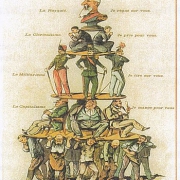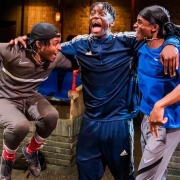What Makes Good Media Representation?
What are some markers of quality representation in TV and film?
If you’ve been online in recent years, involved in social justice discourse, or simply enjoy knowing about media and popular culture, you may have come across the hashtag or phrase “Representation Matters.” This slogan can refer to representation in any field and realm, but essentially, it expresses the significance and importance of genuine, positive presentations of human lives and experiences. There are many reasons as to why depictions of people, especially in film and TV, ought to be present, realistic, and reflective of reality. Good representation is important for many reasons, including: that it can be educational, that it affects how people are seen by others and how they feel seen themselves, and that it guides discourse about real people, places, and experiences. In the realm of culture, it subliminally dictates which issues are ‘important’ or ‘allowed’ into the mainstream, and which ones are excluded.
Thus, when looking to create media, the question of what to show, whom to represent, and how to go about it are some of the first questions that must be considered. Not only will exploring these questions help writers to develop a better understanding of their creative characters and stories, but it will also contribute to the quality and accuracy of the work overall. It’s both important and useful to bear in mind some tips for representing all people accurately and respectfully in the media, but especially when representing people from minority and/or marginalized groups. Every person experiences the world differently and possesses similarities and differences with others – but everyone also deserves to feel visible and respected. They also deserve to have their perspectives reflected and affirmed in the media they watch.
Although ‘quality’ and ‘goodness’ are subjective topics, there do exist a few consistent standards and guidelines for the creation of ‘good’ representation. Grounded in my own experiences and understandings, as well as some research, here is a shortlist of strategies that tend to either promote or hinder high-quality representation in TV and film.
Indicators of poor-quality representation
- Excessive suffering of minority characters
- Stories based solely on tragedy or ‘trauma porn’ are inappropriate because they exploit suffering for non-group-member audiences’ entertainment, serve no function to those it’s trying to represent, and can even be triggering to those who’ve experienced these difficulties.
- Stereotyping and generalizing
- The blog article Understanding Character Representation – Mythcreants does a great job of clarifying why stereotyping is harmful, and how to recognize when a character is merely a manifestation of a stereotype.
- Misrepresentation
- Claiming representation when it is not actually depicted, or, alternatively, claiming representative accuracy when the depiction is not reflective of people’s true experiences, is not ideal representation. This may result from a lack of knowledge or consideration on the part of creators.
Indicators of high-quality representation
- Confirmation and relatability from group members
- When a viewer sees a character or storyline and thinks, ‘That’s me/that’s exactly how I feel/that’s also what I’ve experienced!’, the representation is probably on the right track.
- Realism
- Representing characters in a fair and accurate manner, backed by research and understanding, is key. Characterizations might portray any combination of positive and negative aspects of an identity, but should be created with realism and factuality in mind.
- Representation of, by and for cultural group members
- It’s great if members of a group being represented are thoroughly involved in the media, especially in the creation and portrayal of certain characters, so that marginalized voices and perspectives take the main stage and are not filtered through the lens of another.
- Story Centrality
- Good representation isn’t sandwiched into an otherwise non-representative story; marginalized characters and stories should be valuable, functional to the plot, and engaging in their own right. Such stories deserve to be centered, not portrayed as an afterthought.
While this list is by no means comprehensive, adhering to the points outlined could allow for the creation of better-quality, thoughtful, and accurate representation in stories, which in turn creates more space in the world for similar voices to be amplified and heard. The above points also outline ways for new creatives to begin to think about the characters they are crafting, and to reflect on how and why diversity is critical to storytelling. Ultimately, the final creative result can only be enhanced by thoughtful, high-quality representation.






 Tristram Kenton
Tristram Kenton



